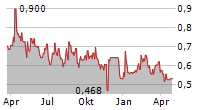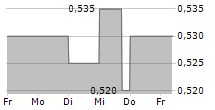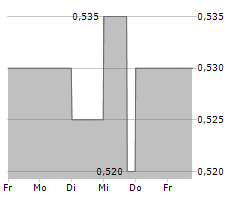
Vancouver, British Columbia--(Newsfile Corp. - April 1, 2025) - Scottie Resources Corp. (TSXV: SCOT) (OTCQB: SCTSF) (FSE: SR8) ("Scottie" or the "Company") is pleased to announce positive results from ABH Engineering Inc.'s Phase I ore sorting study conducted on sample material extracted from the Company's Scottie Gold Mine Project. The results support the establishment of a high-margin direct ship ore ("DSO") operation to deliver a gold concentrate to Asian copper/precious metals smelters.
DSO Operation Attributes:
Using XRF ore sorting technology, the operation will eliminate the need for a gold processing plant and tailings facility, thereby significantly reducing the capital required and resulting in a minimal environmental footprint
The operation will be the one of the world's closest gold projects to a deep-sea shipping terminal, and positioned in one of North America's cheapest commercial shipping lanes to Asia
The mine operation is planned to commence initially with an open pit that will reduce startup and operational risk and further reducing capital costs
All critical external infrastructure such as power lines and hauling roads exist right to site
The Asian copper smelter market is in a structural supply deficit allowing mines such as Scottie Resources to benefit from extremely low treatment charges for the foreseeable future
Existing mine permit provides pathway to near term production
Dr. Thomas Mumford, VP Exploration commented: "The unique characteristics of Scottie Gold Mine Project make it ideally positioned to take advantage of the advancements in ore sorting. This study confirms that the mineralogy of our deposits makes them excellent candidates for ore sorting with both XRF and XRT. The ability to substantially increase grade while reducing the volume of material to be shipped has significant positive economic implications for Scottie as we continue to explore low-risk, low-capital pathways to production, namely direct-shipping ore and toll milling."
Brent Hilcher, VP of Mineral Processing at ABH Engineering, stated, "The Scottie Gold Mine Project results are extremely promising. Both XRF and XRT have been shown to be able to very effectively sort high-grade gold-bearing rocks from waste rocks."
The DSO project envisions initially mining the Blueberry open pit and the concurrent ramp-up of the Scottie Mine underground to an annual site production of 80,000 to 100,000 ounces of gold. This operation would be a low-capital, high-margin project with low operating costs, due to the variable cost nature (mine contracting, hauling, shipping, and third-party processing charges).
Adding gold ounces through continued exploration success on the project would further enhance the economics, as the project is intrinsically scalable to meet higher production levels due to its simplicity of processing infrastructure at site.
Ore Sorting Objective and Methodology
The objective of the Phase I ore sorting study was to determine whether the mineralized material could be pre-concentrated into commercially attractive products (Table 1) for shipping to copper/precious metals smelters. Sets of representative samples were collected from three different zones in the deposit to evaluate the potential effectiveness of XRF (X-ray fluorescence) and XRT (X-ray transmission) sensor-based sorting.
Highlights:
- Mineralogical work indicates strong associations between gold zones and sulphide minerals pyrrhotite and pyrite, making the deposits amenable to multiple types of sensors
- Phase I demonstrates that XRF and XRT are both highly effective technologies for discriminating between ore and waste on the Scottie Gold Mine Project, with a slight advantage to XRF
- The XRF sorting technology of the Scottie samples produced a significant increase from the conceptual* mine grade to produce three commercially viable products attracting a range of payable terms. Results from the XRF and other samples produced comparable results (Figure 1)
- Further improvements will be investigated in Phase II such as three-way sorting, blending of DSO products, and dense media separation treatment of the fines material
Table 1: Selected Recovery-Mass Pull XRT results for the three modelled deposit zones. Recoveries factor in 25% fines from crushing, where the grade of the fines is assumed to be equal to the pre-sort feed grade.
| Test Parameters | Blueberry Open Pit | Blueberry Underground | Scottie Gold Mine Underground |
| Pre-sort Conceptual* Feed Grade (g/t gold) | 3.5 | 6.5 | 10 |
| Mass Pull | 44% | 62% | 48% |
| Recoveries | 90% | 98% | 93% |
| Post-Sort Feed Grade (g/t gold) | 7.2 | 10.4 | 19.7 |
| Upgrade Ratio | 2.1 | 1.6 | 2.0 |
Phase I Ore Sorting Study
The study consisted of a total of 210 individual rock samples, 70 from each of the following zones: Blueberry Open Pit (BBOP), Blueberry Underground (BBUG), and Scottie Gold Mine Underground (SGMUG). Individual samples were composed of diamond sawn quarter core pieces, 5-8 cm in length. The test program consisted of an XRF scan and an XRT scan followed by assays of the individual rock samples. Scans for XRF were performed in-house by ABH Engineering, and scans for XRT were performed using TOMRA's XRT Tertiary sorter by Saskatchewan Research Council (SRC).

Figure 1: Comparison charts and associated tables for the mass pull and recoveries of XRF results from BBOP, BBUG, and SMUG. Fines generated from crushing are not considered in these mass pull - recovery curves or adjacent accompanying tables.
To view an enhanced version of this graphic, please visit:
https://images.newsfilecorp.com/files/11118/246803_a74189a5f4831b80_004full.jpg
The average grades from the BBUG (7.6 g/t Au) and SGMUG (6.9 g/t Au) zones were close enough to the conceptual grades* considered for those zones of 6.5 g/t Au and 10 g/t Au respectively, so no grade correction to compensate for the difference was applied. The average grade of the samples from the BBOP zone that were sent for testing was 8.9 g/t Au, which is higher than the conceptual average grade of the deposit of 3.5 g/t Au. Grade correction was applied to the samples to estimate sorter performance on similar-grade material that would be mined. *The conceptual grades used for the deposits do not comply with CIM Definition Standards on Mineral Resources and Mineral Reserves as required by NI43-101 and have no comparable classification. The company is not treating these as actual grades for the deposits and is only using them to illustrate the potential viability and magnitude of the impact of ore sorting on the gold-bearing rocks in the Scottie Gold Mine Project.
Results show that both XRF and XRT technologies would be applicable to the deposit, with XRF showing an edge over XRT for all tested zones in terms of mass pull - to - recovery ratio (Figure 1), with the added benefit of being able to conduct a three-way sort and create a low-grade stockpile utilizing a single system.
The recovery curves from all three zones show significant metal recovery over the first 25-50% of mass pull. Scottie considers these results to be particularly advantageous when considering production models where the metal recovery process occurs offsite, i.e. toll milling, direct-shipping ore to smelters. In these models, shipping and treatment charges are done on a per ton basis, thus greatly favouring low-volume, higher-grade DSO products. In addition, higher-grade products also command higher percentage payable terms. With the recovery curves as steep as they, ore sorting offers a measure of control over the final grade of the DSO product that can be tuned to maximize the economic potential of the project. These ore sorting results are planned to be part of an upcoming PEA following the release of Scottie's maiden mineral resource estimate.
Planned - Phase II Ore Sorting Study
The proposed Phase II ore sorting test will use the preliminary results from the Phase I study to select the sorting parameters for a large three-stage cascade ore sorting test. This creates multiple products and algorithms to determine the optimal sorting conditions suitable for production and achieving the highest increase to the economic value of the project with a better representativity of the sample than the Phase I study.
This next testing stage will utilize full-scale equipment allowing direct comparison to full scale production projections, evaluate various available ore sorting technologies, evaluate performance under economic conditions, and include capital and operating expenditure estimates.
The company is preparing to proceed with a Phase II ore sorting study but is awaiting its initial mineral resource estimate for the Scottie Gold Mine Project in order to confirm representative grades for the study. Scottie plans to initiate Phase II prior to the commencement of drilling in 2025 and release the results before year end.
About the Scottie Gold Mine Project
Mineralization on the project consists of east-west to northwest trending, steeply dipping, shear veins, that are comprised of pyrrhotite > pyrite ± quartz ± calcite. The veins are primarily hosted in a package of andesitic volcanic rocks from the Hazelton Unuk River Formation that are situated adjacent to the contact with the Summit Lake stock, part of the Texas Creek Plutonic Suite. While 13+ distinct gold-bearing vein zones have been identified on the Scottie Gold Mine Project, mine production was primarily from one vein (the M-zone).
Exploration of the Scottie Gold Mine Project over the past 6 years has produced exceptional drill results through the discovery of high-grade gold in five new zones (Blueberry Contact Zone, Domino, D-Zone, P-Zone, Wolf) and the expansion of previously drill confirmed targets (Scottie Gold Mine, C-Zone, Bend Vein, Stockwork). There is a clear spatial relation between the outcropping and drill-confirmed high-grade gold targets and the contact with the Jurassic aged, Texas Creek Plutonic suite intrusion. Geological work in the area has established strong connections between the various deposits. The chemical, mineralogical, structural, and age relationships of the deposits and host rocks support a genetic model whereby all deposits are linked to the same mineralizing event.
Quality Assurance and Control
Results from assayed samples taken during the 2025 Phase I ore sorting study were analyzed at SGS Minerals in Burnaby, BC. The sampling program was undertaken under the direction of Dr. Thomas Mumford. A secure chain of custody is maintained in transporting and storing of all samples. Gold was assayed using a fire assay with atomic absorption spectrometry and gravimetric finish when required (+9 g/t gold). Analysis by four acid digestion with multi-element ICP-AES analysis was conducted on all samples with silver over-limits being re-analyzed by emission spectrometry.
Dr. Thomas Mumford, P.Geo., a qualified person under National Instrument 43-101, has reviewed the technical information contained in this news release on behalf of the Company.
ABOUT SCOTTIE RESOURCES CORP.
Scottie owns a 100% interest in the Scottie Gold Mine Property which includes the Blueberry Contact Zone and the high-grade, past-producing Scottie Gold Mine. Scottie also owns 100% interest in the Georgia Project which contains the high-grade past-producing Georgia River Mine, as well as the Cambria Project properties and the Sulu and Tide North properties. Altogether Scottie Resources holds approximately 58,500 hectares of mineral claims in the Stewart Mining Camp in the Golden Triangle.
The Company's focus is on expanding the known mineralization around the past-producing mines while advancing near mine high-grade gold targets, with the purpose of delivering a potential resource.
All of the Company's properties are located in the area known as the Golden Triangle of British Columbia which is among the world's most prolific mineralized districts.
Additional Information
| Brad Rourke President and CEO +1 250 877 9902 brad@scottieresources.com | Gordon Robb Business Development / IR +1 250 217 2321 gordon@scottieresources.com |
Forward-Looking Statements
This news release may contain forward-looking statements. Forward-looking statements are statements that are not historical facts and are generally, but not always, identified by the words "expects", "plans", "anticipates", "believes", "intends", "estimates", "projects", "potential" and similar expressions, or that events or conditions "will", "would", "may", "could" or "should" occur. Although the Company believes the expectations expressed in such forward-looking statements are based on reasonable assumptions, such statements are not guarantees of future performance and actual results may differ materially from those in forward-looking statements. Forward-looking statements are based on the beliefs, estimates and opinions of the Company's management on the date such statements were made. The Company expressly disclaims any intention or obligation to update or revise any forward-looking statements whether as a result of new information, future events or otherwise.
Neither TSX Venture Exchange nor its Regulation Services Provider (as that term is defined in the policies of TSX Venture Exchange) accepts responsibility for the adequacy of accuracy of this release.

To view the source version of this press release, please visit https://www.newsfilecorp.com/release/246803
SOURCE: Scottie Resources Corp.



